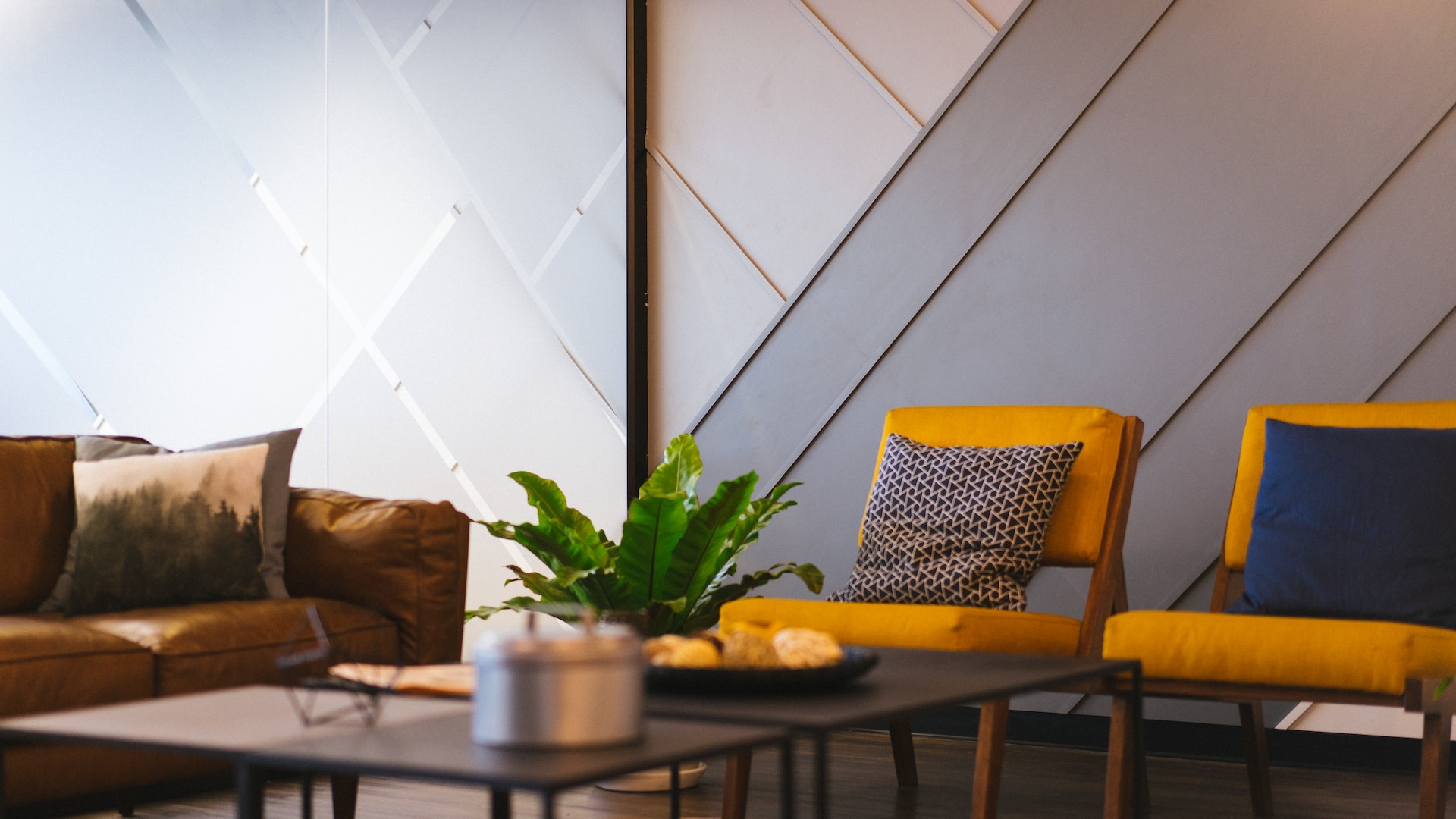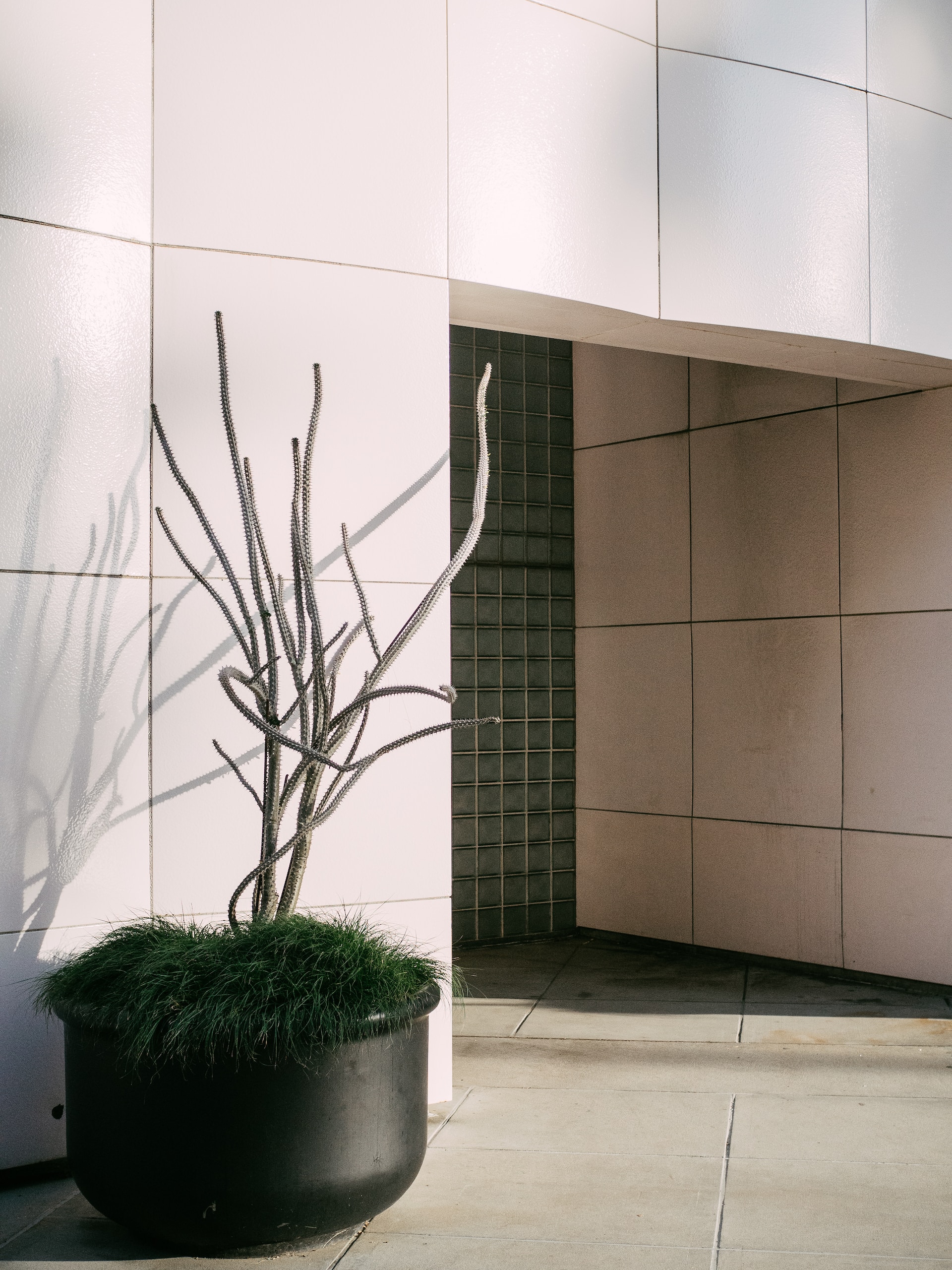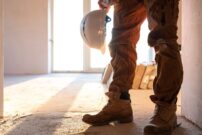Understanding the Materials Used in Acoustic Panel Construction


Stephanie Rogers
Stephanie Rogers is a distinguished BPA Advisor specializing in Audio & Technology. As a versatile writer, Stephanie channels her passion for writing into various topics, including home remodeling, interior design ideas, and landscaping. Recently, her interest in music has led her to explore the dynamic intersection of audio and technology in construction. She contributes valuable insights that enrich discussions on the integration of cutting-edge audio solutions in modern construction practices.
Visually appealing acoustic panel construction softens and diffuses sounds by reducing echo and reverberation to create pleasant spaces free of unwanted noise. In comparison, soundproofing materials only block the sound from room to room or noisy mechanicals in the ceiling. You can use acoustic panel construction to enhance the acoustics of numerous spaces, including offices, restaurants, schools, recording studios, etc., to improve communication and productivity and reduce stress.

Understanding the best materials for acoustic panel construction will help you achieve your project's acoustic performance goals. Adequately controlling sound in a room, auditorium, church, etc., requires selecting safe, durable acoustic panels with superior acoustic performance and easy construction and application. In addition, choosing a sustainable panel will help protect the environment for future generations.
Unfortunately, many traditional acoustic panel construction materials pose significant problems, they:
- Contain unhealthy toxins
- Lack adequate fire resistance
- Require special equipment to handle
- Do not contribute towards a sustainable environment
Fortunately, innovative technologies, like ECOSE® Technology, bonded cotton, and hemp fiber panels improve the safety and sustainability of acoustic panel design and construction.
How To Choose Materials for Acoustic Panel Construction
Factors to consider when choosing the best acoustic panel include,
Health and Safety of the Acoustical Panel
An acoustic panel should add to the space's safety, particularly regarding fire and air quality:
- Class A fire-rated panels will contribute to the room's safety and building code requirements.
- Avoid panels with formaldehyde. Many manufacturers use a formaldehyde binder during production for its low cost and availability. Formaldehyde can irritate the nose, eyes, and throat at low levels. High levels can cause coughing, choking, throat swelling, or even chemical burns to the lungs.
Durability and Lifespan
The acoustic panel should maintain its integrity for its desired lifespan.
Acoustical Performance of the Acoustic Panel
You can compare the acoustic performance of the acoustic panel by looking at its Noise Reduction Coefficient (NRC) and density:
The Noise Reduction Coefficient (NRC) indicates how much sound an acoustic panel absorbs within a room. For example, an acoustic panel with an NRC of 0.80 will absorb 80 percent of sound reaching it. The ASTM C423, Standard Test Method for Sound Absorption and Sound Absorption Coefficients by the Reverberation Room Method, measures the NRC. The greater the NRC, the better the panel absorbs sound.
Manufacturers produce acoustic slabs at a higher density than other forms of insulation, like low-density thermal insulation. Sound insulation slabs start at a minimum density of 2.8 lb/ft3 (45 kg/m³). The density of the panel determines its ability to absorb the frequency. The higher the density, the more efficiently the panel will absorb low frequencies (150Hz+). However, if the panel is too dense, the high frequencies will reflect back into the room. The best acoustic panel will provide balance absorption, i.e., about 6 lb/ft3 (96 kg/m³)
Ease of Handling the Acoustic Panel
Consider the ease of handling the panel: does it require protective equipment to handle, like masks and gloves?
Sustainability
Consider the impact of the product on the environment: does the manufacturer use recycled products? Can you recycle the panel?
Fabric Cover of Acoustic Panel
The fabric covering of the acoustic panel provides aesthetics; however, the right fabric can also help ensure the success of the acoustic filling at controlling sound. Fabrics should provide durability for the lifespan of the panel and acoustic permeability to ensure the sound makes its way through the fabric,
Materials Used in Acoustic Panel Construction
Common acoustic panel construction materials include fiberglass, Rockwool, rigid polyester, polyester wool, and foam.
Fiberglass Acoustic Panel
Acoustic fiberglass typically contains tiny particles of compressed recycled glass or plastic. Manufacturers enhance the products' soundproofing capability by heating and spinning sand at high speed to form the glass.
Pros of Fiberglass
- Offers a high NRC of 0.90 to 0.99 that absorbs sound.
- Fiberglass insulation's density of 0.5 to 1.0 pounds ft3 lessens sound by 4 to 10 decibels.
- Durable fiberglass won't warp or decay from exposure to moisture. It also resists corrosion, insects, mold, and mildew.
Cons of Fiberglass
- Many manufacturers of fiberglass acoustic panels use formaldehyde-based fiberglass.
- While highly heat resistant, fiberglass melts at about 1,100 ℉.
- Soft and spongy fiberglass contains tiny airborne fibers that require you to use gloves, masks, and safety glasses. Breathing airborne fiberglass may irritate the skin, nose, eyes, and throat, leading to itching, coughing, or wheezing.
- You can not recycle fiberglass products, so most fiberglass acoustic panels end up in landfills.
Rockwool Mineral Wool
To make Rockwool mineral wool, manufacturers superheat (above 2,900 ℉) basalt rock and slag, a recycled steel-making byproduct, until they become a lava-like liquid mixture. Next, then blow the mixture into a large spinning chamber designed to stretch the liquid into fibers. Finally, the fibers are compressed into a mat and cut into slabs of Rockwool insulation.
Pros of Rockwool Mineral Wool
- Rockwool has an NRC of 0.8-1.0.
- Thick Rockwool insulation slows, if not stops, the transmission of sound waves. Its density of around 1.7 lb m3 consistently dampened sound by 10 to 15 decibels.
- Mineral wool insulation contains 75 percent of recycled materials.
- Rockwool's R-value ranges between 3.0 to 3.3 per inch of insulation, which makes it effective for soundproofing as well as fire and moisture resistance.
- Mineral wool products resist fire and heat up to 1,400 ℉.
- Water-resistant Rockwool insulation resists mold, mildew, fire, and corrosion.
Cons of Rockwool Mineral Wool
- Many Rockwool products use a phenol-formaldehyde binder during production.
- Rockwool costs more than similar materials like fiberglass.
- Rockwool does not biodegrade.
- Consumers may find it challenging to find a Rockwool dealer.
- Rockwool's integrity diminishes over time due to its crumbly nature.
Rigid Polyester
Manufacturers use 100-percent polyester fibers (long-chain synthetic polymers) to make polyester acoustic panels. It creates a non-toxic, lightweight acoustic insulation product.
Pros of Rigid Polyester
- NRC Rating: 0.70
- Absorbs medium and high-frequency sounds
- Offers a blend of heavy density (approximately 0.13 lb ft3) and porosity
- Hypoallergenic, dust-free and formaldehyde-free
- Uses 60-percent post-consumer polyester fiber and is 100-percent recyclable
- Resists mold, mildew, and bacteria
- Durable rigid polyester offers impact resistance, high tackablity, and is Class A fire rated
Cons of Rigid Polyester
- Polyester does not absorb low-frequency sounds, like those generated by appliances or a neighbor's stereo.
- The tiny polyester fibers can create irritation to the respiratory system during installation.
- Installers must wear protective light respiratory equipment (i.e. a dust mask) when handling.
- Installers find it challenging to handle the large bales during installation.
Polyester Wool Panels
Semi-rigid polyester fiber wool acoustic panels reduce echo. Manufacturers use 100-percent polyester fiber (long-thin synthetic polymers) to make polyester wool acoustic panels.
Pros of Polyester Wool Panels
- NRC rating: 0.85
- Non-toxic polyester wool panels do not contain harmful formaldehyde.
- Polyester fibers do not contain or produce ozone-depleting substances or gasses.
- Odorless polyester does not contain negligible volatile organic chemicals (VOCs).
- Manufacturers use recycled polyester to make polyester wool panels, which are 100-percent recyclable.
- Easy-to-handle polyester wool acoustic panels do not contain itchy or breathable fibers like fiberglass wool.
- Installers do not need protective devices to install polyester wool panels.
- They are moisture and mold resistant.
- Polyester wool panels do not settle, decay, or deteriorate over time.
Cons of Polyester Wool Panels
- Polyester acoustical wool has a slightly lower fire rating than glass wool.
Acoustic Foam Panels
Manufacturers engineer acoustic foam panels from open-cell polyurethane foam cut to shape and size for applications ranging from echo reduction and sound deadening to decoration. The NRC varies based on the shape and thickness of the panels.
Pros of Acoustic Foam
- The unique textured designs on the panel allow more surface area than its footprint on the wall.
Cons of Acoustic Foam
- Incorrectly placed, acoustic foam panels will not absorb sound but will reflect sound waves from one wall to another. Ensuring the acoustic foams work to their full ability often requires hiring a professional.
- Acoustic foam panels contain polyurethane, which releases a high smoke level when burned, therefore not safe during a fire.
- While acoustical foams offer extensive size flexibility, acoustic foam's jagged, wavy edges are often aesthetically unpleasing.
- You cannot recycle acoustic foam.
- Polyurethane acoustic foam degrades and flakes off into particles after seven years, losing its ability to absorb or diffuse sound.
Alternatives Materials to Use in Acoustic Panel Construction
Innovative technologies, like ECOSE® Technology, bonded cotton, and hemp fiber panels offer improvements over commonly used acoustic panel construction, for improved safety and sustainability.
ECOSE® Technology Eliminates Formaldehyde and Phenols
ECOSE® Technology uses rapidly renewable materials instead of the formaldehyde and phenols found in the traditional binders used in glass and rock mineral wool insulation production. Patented ECOSE® Technology creates an exceptionally strong binder that bonds mineral wool and glass insulation strands together by converting bio-based materials into an inert polymer. Sustainable, recyclable ECOSE® Technology lessens embodied energy and improves indoor air quality. Adam Beason, of Acoustical Solutions, mentions “ECOSE® Technology may also help you meet green building standards and earn LEED points as well.”
Bonded Cotton
Bonded Acoustical Cotton, made of lightweight, recycled cotton, is a toxin-free cost-effective alternative acoustic absorbing material. Benefits of bonded cotton include:
- Contains no formaldehyde of volatile organic components
- Resists mold, fungi, and mildew
- Class A fire rated
- Easily applied with adhesive
- Durable and impact resistant
- The density of 3 to 6 lb ft3
- NRC ranging from 0.80 to 1.15
Hemp Fiber Sound-Insulating Panels
Sound-absorbing and sound-insulating Hemp Fiber acoustic panels are an ecological and natural alternative to mineral fiber in any acoustic insulation application.
The benefits of hemp fiber contribute to a healthy, sustainable environment:
- Hemp fibers NRC ranges from 0.35 to 0.55 depending on its bulk density.
- Hemp fibers contain no chemical glues or polluting additives.
- You can recycle hemp fibers at the end of the panel's life cycle.
- Hemp fibers resist insects and rodents because the heat-curing process volatilizes the protein substances in the plant fibers.
- Installing the product does not require masks or gloves.
- Moisture-resistant hemp fiber resists mold and rot.
Understanding Acoustic Panel Construction Materials
Understanding the materials used in acoustic panel construction can help you choose a panel that most effectively controls the sound in a small or large space. However, you must also consider safety by avoiding products with toxins and that lack adequate fire resistance, along with those that require special equipment to install.
Modern innovations, like cotton-bonded acoustic panels, ECOSE® Technology, and hemp fiber panels, offer safer, easier-to-handle, and sustainable solutions to traditional acoustic panel construction like fiberglass, foam, rigid polyester, Rockwool, and polyester wool.
Get Smarter About Building Products
Join 50,000+ subscribers and get our 3 min daily newsletter on what matters in the building materials industry.
You might like this


Toolbox Treasures: Exploring Must-Have Construction Components
Constructing a building, whether it’s a towering skyscraper or a cozy home, is a complex puzzle that requires a skilled hand and the right set of tools. In the world of construction, having the right components in your toolbox can make all the difference. From sealers that protect against the elements to essential hardware that […]


7 Advantages of Insulated Concrete Forms (ICFs) in Sustainable Construction
In the ever-evolving landscape of construction, the emphasis on sustainable building practices has become paramount. Among the innovative solutions revolutionizing the industry, Insulated Concrete Forms (ICFs) stand out as a versatile and eco-friendly alternative, offering a myriad of advantages in the realm of sustainable construction. 1. Energy Efficiency at its Core At the heart of […]


Clean & Safe: Mastering Jobsite Cleanup for a Secure Workplace
A well-organized and clean job site is not just a matter of appearances- it plays a crucial role of ensuring safety and security to any jobsite. A tidy space reduces the chances of accidents, promotes better focus, and boosts employee morale. Plus, it sends a clear message that the organization values the health and safety […]